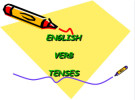
Basic Grammar in use ( Grammar )
Page 39
Quy tắc chung:
Chủ ngữ là danh từ số ít hoặc danh từ không đếm được đi cùng động từ số ít và chủ ngữ số nhiều đi
cùng động từ số nhiều.
Tuy nhiên, đôi khi chủ ngữ còn hoà hợp với động từ tuỳ theo ý tưởng diễn đạt hoặc danh từ/đại từ
đứng trước theo các quy tắc nhất định. Sau đây là một số quy tắc cơ bản về sự hoà hợp giữa chủ ngữ và
động từ:
V (số ít)
Chủ ngữ là danh từ và cụm danh từ số ít.
Chủ ngữ là các đại lượng chỉ thời gian, khoảng cách, tiền bạc, hay sự đo lường.
Chủ ngữ là các đại từ bất định: someone, anything, nothing, eve-eryone,
another…
Chủ ngữ là mệnh đề danh từ Ex: All I want to do now is to sleep.
Chủ ngữ bắt đầu bằng “to infinitive” hoặc “V-ing”.
Chủ ngữ bắt đầu bằng cụm từ “Many a”.
Chủ ngữ bắt đầu là một phân số có tử số là 1. Ex: 1/2 is larger than 1/3.
Chủ ngữ là một số danh từ đặc biệt có hình thức số nhiều: môn học (Physics,
Maths), môn thể thao (billards, athletics…), tin tức (news), các loại bệnh
(rabies, measles…) , tên 1 số quốc gia và tổ chức (UN, the United States,
the Philipines…), loài động vật (ants, elephants…)
Chủ ngữ bắt đầu bằng: Most of/All of/Plenty of/ + N (không đếm được/số ít).
Chủ ngữ bắt đầu bằng “The number of + N (số nhiều)”.
Chủ ngữ bắt đầu bằng “None of + N (số nhiều)/ No + N (số ít)”.
Chủ ngữ bắt đầu bằng N1 (số ít) of N2.
Chủ ngữ là cụm danh từ chỉ nhóm động vật (số ít) mang nghĩa “bầy, đàn”:
flock of birds/sheep, school of fish, pride of lion, pack of dogs, herd of cattle…
A large amount/A great deal + N (không đếm được/ số ít).
Neither (of)/Either of + N (số nhiều)
Ex:
- Neither restaurants is expensive.
- Either of them works in this company.
Chủ ngữ là một tựa đề.
Ex: “Chi pheo” is a famous work of Nam Cao.
Chủ ngữ bắt đầu bằng “A pair of + N (số nhiều)”.
Ex: A pair of pants is in the drawer.
V (số nhiều)
Chủ ngữ là danh từ và cụm danh từ số nhiều.
Ex: Oranges are rich in vitamin C
Một số danh từ kết thúc bằng “s” nhưng dùng số nhiều: people, police,
cattle, children, geese, mice…
Ex: People are searching for something to eat.
Hai chủ ngữ nối nhau bằng “and” và có quan hệ đẳng lập
Ex: Jane and Mary are my best friends.
Tuy nhiên, nếu 2 danh từ cùng chỉ một người, một bộ phận hoặc 1 món ăn…
thì động từ chia ở số ít. (Lưu ý: không có “the” ở trước danh từ sau “and”.)
Ex: Bread and butter is their daily food.
Cấu trúc “both N1 and N2”
Ex: Both Betty and Joan are cooking for their dinner party.
Chủ ngữ là 1 đại từ: several, both, many, few, all, some + N (số nhiều).
Subject and verb agreements (Sự hòa hợp chủ ngữ và động từ)

Basic Grammar in use ( Grammar )
Page 40
Ex: Several students are absent.
Chủ ngữ là “The + adj”, chỉ một tập hợp người
Ex: The poor living here need help.
Chủ ngữ bắt đầu là một phân số có tử số từ 2 trở lên.
Ex: 2/5 are smaller than 1/2.
Các danh từ luôn dùng dạng số nhiều (thường đi theo cặp): trouser, eyeglasses, jeans,
tweezers, shorts, pliers, pants, tongs…
Ex: The pants are in the drawer.
Chủ ngữ bắt đầu bằng: Most of/All of/ Plenty of/Some of/Majority of/
The last of/ One of/Half of/Part of/The rest of/Percentage of/A lot of/Lots of/A
third of/Minority of + N (số nhiều).
Ex: Most of people in the factory are male.
Chủ ngữ bắt đầu bằng “A number of + N (số nhiều).
Ex: A number of students going to class decrease.
Chủ ngữ bắt đầu bằng “No + N (số nhiều).
Ex: No people understand what he says.
Chủ ngữ bắt đầu bằng “N1 (số nhiều) of N2”.
Ex: The studies of how living things work are called philosophy.
Chủ ngữ là cụm danh từ chỉ nhóm động vật (số nhiều) mang nghĩa “bầy, đàn”:
flocks of birds/sheep; schools of fish; prides of lion; packs of dogs; herds of cattle…
Ex: Flocks of birds are flying to its destination.
V chia theo chủ
ngữ đầu tiên
Chủ ngữ được nối với nhau bởi các liên từ: “as long as, as well as, with,
together with, along with, in addition to, accompanied by”.
Ex:
- She, along with her classmates, is going to university this year.
- Mrs. Smith together with her sons is going abroad.
V chia theo các
danh từ thứ 2
Either …or…
Neither … nor…
Not only … but also…
… or…
… nor…
Not… but…

Basic Grammar in use ( Grammar )
Page 41
PRACTICE EXERCISES
Exercise 1: Chọn dạng đúng của động từ trong ngoặc
1.
The trousers you bought for me (doesn't/ don't) fit me.
2.
Physics (was/ were) my best subject at school.
3.
Fortunately the news (wasn't/ weren't) as bad as we had expected.
4.
The police (wants/ want) to interview Fred about a robbery.
5.
Three days (isn't/ aren't) long enough for a good holiday.
6.
Where (does/ do) your family live?
7.
England (have/ has) lost all their football matches this season.
8.
(Does/ Do) the police know about the stolen money?
9.
Can I borrow your scissors? Mine (isn't/ aren't) sharp enough,
10.
I'm going to take a taxi. Six miles (is/ are) too far for me to walk.
11.
John, along with twenty friends, (is/ are) planning a party.
12.
The picture of the soldiers (bring/ brings) back a lot of memories.
13.
If the duties of these officers (isn't/ aren't) reduced, there will not be enough time to finish the
project.
14.
Advertisements on television (is/ are) becoming more competitive than ever before.
15.
Living expenses in this country, as well as in many others, (is/are) at an all-time high.
16.
Mr. Jones, accompanied by several members of the committee, (have/ has) proposed some
changes of the rules.
17.
The levels of intoxication (vary/ varies) from subject to subject.
18.
Neither Bill nor Mary (is/ are) going to the play tonight.
19.
Anything (is/ are) better than going to another movie tonight.
20.
Skating (is/ are) becoming more popular every day.
Exercise 2: Chia dạng đúng của động từ trong ngoặc
1.
A number of reporters (be) at the conference yesterday.
2.
Anybody who (have) a fever must go home immediately.
3.
Your glasses (be) on the bureau last night.
4.
There (be) some people at the meeting last night.
5.
The committee already [reach) a decision.
6.
A pair of jeans (be) in the washing machine this morning.
7.
Each student (answer) the first three questions.
8.
Either John or his wife (make) breakfast every morning.
9.
After she had perused the material, the secretary thought that everything (be) in order.
10.
The crowd at the basketball game (be) wild with excitement.
11.
A pack of wild dogs (frighten) all the ducks away.
12.
The jury (be) trying to reach a decision.
13.
The army (have) eliminated this section of the training test.
14.
The number of students who have withdrawn from class this quarter (be) appalling.
15.
There (have) been too many interruptions in this class.
16.
Every elementary school teacher (have) to take this examination.
17.
Neither Jill nor her parents (see) this movie before.
18.
There (be) no girls in this class.
19.
There (be) no key for this door.

Basic Grammar in use ( Grammar )
Page 42
20.
80% of the students (have) voted.
Exercise 3: Trong mỗi câu sau có một lỗi sai, tìm và sửa lại cho đúng.
1.
Geography are fascinating.
2.
Where is my gloves?
3.
Each ticket costed $5.
4.
The boy with his dog are here.
5.
John or Tom are bringing the car.
6.
His hair are turning gray.
7.
Are there anybody at home?
8.
Neither praise nor blame seem to affect him.
9.
Three fourths of his fortune were devoted to scientific research.
10.
Two-thirds of these books is novels.
11.
There are a car and two vans in front of my house.
12.
Why is the police standing there?
13.
So far everything is all right.
14.
More men than women is left-handed.
15.
Fifty minutes are the maximum length of time allotted for the exam.
16.
None of my classmates speaks Arabic.
17.
Every student are tested twice a year.
18.
Each of the items in the bill are correct.
19.10 years in prison were too long for him.
20. None of the children were awake.
Exercise 4: Điền vào mỗi chỗ trống sau một động từ thích hợp
1.
No smoking or drinking allowed during work time.
2.
Indians a lot of junk food.
3.
More than one student late for class this morning.
4.
The United Nations found in 1945.
5.
A number of boys swimming in the lake, but I didn't know the exact number of them.
6.
One and a half day what I need.
7.
There still the possibility of heavy rain and high winds.
8.
Politi cs a constant source of interest to me.
9.
The pilot as well as all the passengers rescued from the crash.
10.
Half of the cookies been eaten.

Basic Grammar in use ( Grammar )
Page 43
ANSWERS KEY
STT
Đáp án
Giải thích chi tiết
1
don't
Chủ ngữ trong câu là "The trousers" (quần tây) ở hình thức số nhiều
nên động từ đi kèm phải được chia là “don't".
2
was
Chủ ngữ "Physics" (môn Vật lí) là một môn học nên mặc dù tận cùng là
"-s" thì động từ cần được chia ở số ít.
3
wasn't
Chủ ngữ “the news" là danh từ không đếm được nên động từ cần được
chia ở số ít.
4
want
Chủ ngữ "the police" là danh từ số nhiều. Vì vậy, động từ cần phải chia
theo ngôi số nhiều ở thì hiện tại đơn.
5
isn’t
Chủ ngữ "three days" thuộc nhóm thời gian nên được coi là danh từ số
ít.
6
do
Chủ ngữ "your family" trong câu này được hiểu là các thành viên trong
gia đình nên sử dụng như danh từ số nhiều.
7
has
Chủ ngữ chỉ quốc gia "England" (nước Anh) là một danh từ số ít.
8
do
Chủ ngữ "the police" là danh từ số nhiều.
9
aren’t
Chủ ngữ "mine" trong câu này được hiểu là "my scissors” nên là danh
từ số nhiều.
10
is
Chủ ngữ “six miles" (6 dặm) thuộc nhóm chỉ khoảng cách nên được coi
là danh từ số ít.
11
is
Chủ ngữ bao gồm hai danh từ nối bằng "along with" thì động từ được
chia theo danh từ phía trước. Ở đây, danh từ phía trước là "John" ở
hình thức số ít.
12
brings
Khi chủ ngữ là một cụm hai danh từ được nối với nhau bằng "of ", động
từ được chia theo danh từ phía trước. Trong câu này, chủ ngữ phía
trước là "the picture" (bức tranh) ở hình thức số ít.
13
aren't
Khi chủ ngữ là một cụm hai danh từ được nối với nhau bằng "of", động
từ được chia theo danh từ phía trước. Trong câu này, chủ ngữ phía
trước là "the duties" (nhiệm vụ) ở hình thức số nhiều.
14
are
Chủ ngữ "advertisements" (quảng cáo) là danh từ số nhiều.
15
are
Chủ ngữ gồm hai cụm danh từ nối với nhau bằng "as well as" thì động
từ được chia theo danh từ phía trước. Danh từ phía trước trong câu
này là "living expenses" chi phí sinh hoạt là danh từ số nhiều.
16
has
Chủ ngữ gồm hai cụm danh từ nối với nhau bằng "accompanied by" thì
động từ được chia theo danh từ phía trước. Danh từ phía trước trong
câu này, Mr. Jones, là danh từ số ít.
17
vary
Khi chủ ngữ gồm hai cụm danh từ nối với nhau bằng "of" thì động từ
được chia theo danh từ phía trước. Danh từ phía trước trong câu này,
the levels (mức độ, cấp độ), là danh từ số nhiều.
18
is
Khi chủ ngữ gồm hai danh từ nối với nhau bằng "neither ... nor" thì
động từ được chia theo danh từ phía sau. Ở đây, danh từ sau là "Mary"
ở ngôi số ít
19
is
Các đại từ bất định như “anything" thì động từ chia ở số ít.
20
is
“Skating" (môn trượt băng) là môn thể thao nên động từ chia số ít.













![Tài liệu luyện thi TOEIC cấp tốc trong 10 ngày [chuẩn nhất]](https://cdn.tailieu.vn/images/document/thumbnail/2025/20251029/kimphuong1001/135x160/99661761725822.jpg)
![Tài liệu Phá đảo TOEIC 900+ từ mất gốc trong 30 ngày [Mới nhất]](https://cdn.tailieu.vn/images/document/thumbnail/2025/20251029/kimphuong1001/135x160/2101761720956.jpg)











